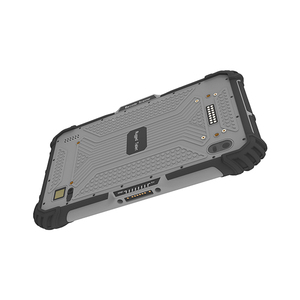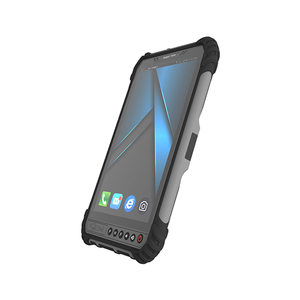
All categories
Featured selections
Trade Assurance
Buyer Central
Help Center
Get the app
Become a supplier

(2618 products available)




















































A Linux rugged tablet PC is a tablet built to withstand harsh environments, such as construction sites or outdoor fieldwork. Linux rugged tablet PCs come in various types.
OS System:
A rugged Linux tablet can be customized with different operating systems, such as Android, Windows, or Linux. The choice of OS will depend on the target user – whether they prefer mobile, desktop or compatibility with existing systems. Linux OS is the more preferred choice because of its open-source nature.
Processor Performance:
The performance of a rugged tablet depends on the type of processor it has. Rugged tablets are designed to perform in difficult conditions and usually have mobile-grade processors comparable to laptops. Evaluating the processor, RAM, and storage options will determine if a rugged tablet is capable of performing the required functions.
Connectivity:
Rugged tablets provide various connectivity options to enable users to stay connected in different environments. Features like Wi-Fi, Bluetooth, GPS, and cellular connectivity like LTE or 5G allow users to communicate, share information, track assets, and access data. These connectivity options support collaboration and enhance productivity in the field.
Display:
The displays on rugged tablets are built differently to function in a variety of conditions. Some displays have dust and anti-glare protection, while others are multi-touch with glove and rain modes. The brightness level can go as high as 1000 nits or more, allowing easy visibility in direct sunlight. Screen sizes usually range from 8 inches to 12 inches.
Battery Life:
Workers in the field need reliable battery life. A rugged tablet can last between 8 to 10 hours on a single charge, and some offer hot-swappable batteries. This ensures work is not interrupted and boosts productivity.
Mounting Options:
Rugged tablets have various mounting options, such as vehicle mounts, hand straps, and kickstands. These allow users to comfortably attach or hold the tablet in active work environments.
Software Applications:
Rugged tablets can be equipped with a variety of software applications to suit the needs of different industries. With mobile applications and desktop software, users can perform tasks like data collection, communication, documentation, and reporting. Common applications include field service apps, logistics management tools, communication platforms, and productivity suites.
Linux rugged tablet PCs are portable computing devices that can be used in a variety of challenging environments. Thanks to their tough specifications, these Linux tablets are ideal for industries such as:
Before purchasing a Linux tablet, it is important to know the end users' needs and the operating environment. Linux offers various distributions with different functionalities, so it is essential to choose one that matches the intended use. Here are some vital factors to consider when selecting a Linux tablet for an industry-based application.
Q1: Can a Linux rugged tablet be repaired?
A1: Yes, Linux rugged tablets can be repaired. However, the repair process may vary depending on the type of damage and the specific rugged tablet model. It usually requires specialized technicians and equipment due to the tablet's robust construction and sealed components.
Q2: Is the Linux rugged tablet cost-effective?
A2: While the initial cost of Linux tablets can be higher compared to traditional non-rugged tablets, they offer long-term cost savings. This is because, due to their durability, Linux tablets minimize replacement costs, and repairs maximize productivity and efficiency.
Q3: Are Linux rugged tablets user-friendly?
A3: Yes, Linux tablets are designed to be user-friendly. They have intuitive user interfaces and standard operating systems like Android or Windows. The simplicity in operation and setup, together with the vast support resources, makes user experience smooth.
Q4: Where can Linux tablets be used?
A4: Linux tablets can be used in various applications, including fieldwork, construction sites, manufacturing environments, military operations, and any other activities requiring communication devices in harsh conditions. They can be used anywhere outside, in areas with moisture, dust, or explosions.